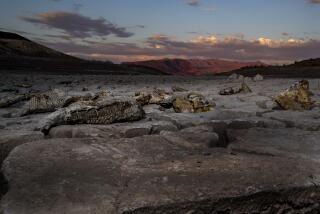Sea level higher than previously thought during last warming
During the last period of global warming, which peaked roughly 125,000 years ago, sea levels may have risen up to 30 feet higher than today’s levels, according to researchers.
A study published Thursday in the journal Science examined data from coral reefs throughout the globe and concluded that ancient sea levels were roughly a third higher than previously estimated.
Drawing parallels between today’s period of planetary warming and the last interglacial period, authors Andrea Dutton of Australian National University and Kurt Lambeck of the University of Florida theorized that the Greenland and Antarctic ice sheets had melted more than commonly assumed.
Previous studies have estimated that sea levels during the last interglacial period were roughly 12 and 20 feet higher than they are today. The study by Dutton and Lambeck, however, pegs the rise at between 18 and 30 feet.
The lower estimate, authors wrote, “can be largely accounted for through thermal expansion of seawater, loss of mountain glaciers, and partial loss of the Greenland ice sheet, but higher levels require a contribution from Antarctica.”
Determining prehistoric sea levels is challenging, due to geologic activity and the uplifting of land masses over time. Study authors said they relied on isotope dating of coral formations in tectonically stable areas.
Scientists interested in predicting future changes in sea level often examine the last interglacial period, because research shows it was only slightly warmer than today’s climate.







